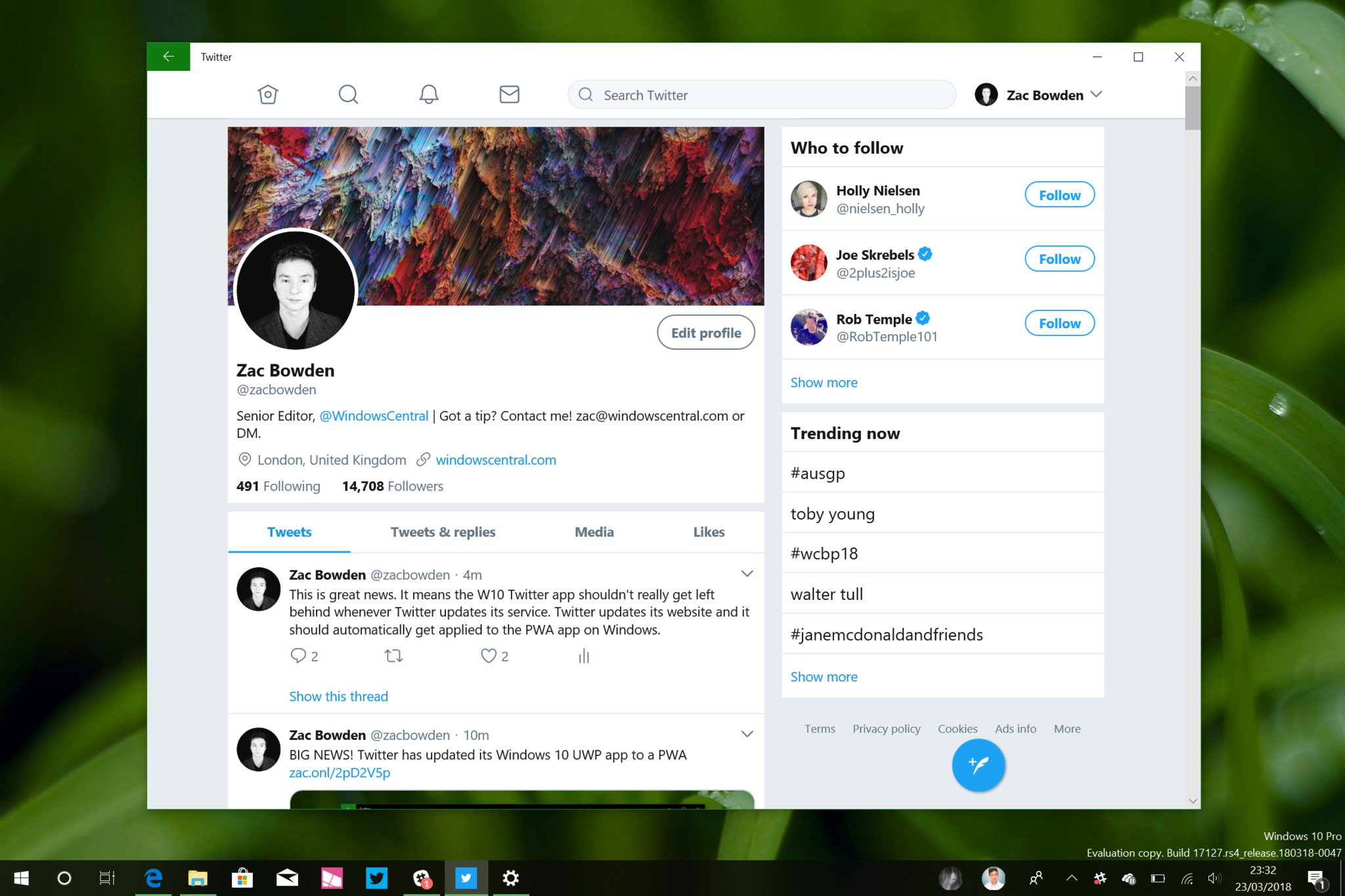Hands-on with the Twitter Progressive Web App (PWA) for Windows 10
The first progressive web app shows a lot of promise on Windows 10.

With the coming release of Windows 10 Redstone 4 in April Microsoft is also letting free progressive web apps (PWA) in the Microsoft Store.
I've already done a lot of theoretical talk about the PWA platform, why Google is behind it, and how it will level the app field across platforms, but we now have a real live example in the form of Twitter.
Twitter's PWA is live in the Microsoft Store for those on the Windows Insider Program (or build 17133) and it replaces the older Universal Windows Platform (UWP) native app.
To be clear, the current Twitter PWA is still a preview. Things like Service Workers – one of the core components of PWAs that handle offline usage, notifications, and more – won't be live until April when Microsoft enables the feature through the Store.
Other things like dark mode, video uploads, and pasting images to the new tweet field are also missing but are expected in the coming weeks.
PWAs and more specifically PWA + UWP hybrids on Windows 10 are still very new for everyone including web developers. How they evolve will be fascinating, but for now, there's a lot of promise already here including excellent scrolling, adaptive scaling, and it feels like a native app.
Microsoft and other companies are expected to push many PWAs to the Microsoft Store in the coming weeks.
Get the Windows Central Newsletter
All the latest news, reviews, and guides for Windows and Xbox diehards.
Services like Starbucks, Instagram, Uber, Lyft, Pinterest, and even Google services are all already formatted for PWA making the potential jump to Windows 10 a breeze. Watch this space.
Further info about PWAs

Daniel Rubino is the Editor-in-chief of Windows Central. He is also the head reviewer, podcast co-host, and analyst. He has been covering Microsoft since 2007 when this site was called WMExperts (and later Windows Phone Central). His interests include Windows, laptops, next-gen computing, and wearable tech. He has reviewed laptops for over 10 years and is particularly fond of 2-in-1 convertibles, Arm64 processors, new form factors, and thin-and-light PCs. Before all this tech stuff, he worked on a Ph.D. in linguistics, performed polysomnographs in NYC, and was a motion-picture operator for 17 years.
